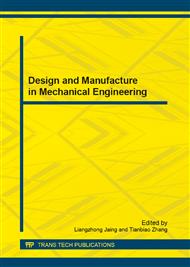p.368
p.373
p.381
p.386
p.392
p.398
p.403
p.409
p.413
Computerized Assessment for Early Screening of Children with Handwriting Difficulty
Abstract:
This study aimed to investigate and identify the parameters that can be used in recognition of basic stroke patterns including straight lines, oblique lines, circles, and curves. The parameters determined are intended to be utilized in handwriting assessment system as a proposed method for screening of handwriting difficulty problem (HWD) among pupils. Seventeensubjects,agedbetween 7 and 8 years old, participated in this experiment. Each subject was requested to draw a series of principal graphic pattern (lines, circles and curves) using the computerized haptic system developed. Statistical analysis revealed that the threshold value used in identification of straight line patterns and angle difference range from-10.8963° ~ 54.4008°. The threshold value to identify a circle is-16.5435°< gap Angle < 64.2014°, and curve for 79.0398°< gap Angle < 187.7604°.
Info:
Periodical:
Pages:
392-397
Citation:
Online since:
September 2013
Price:
Сopyright:
© 2013 Trans Tech Publications Ltd. All Rights Reserved
Share:
Citation:


